Farms, Food and Photography
Ways of seeing
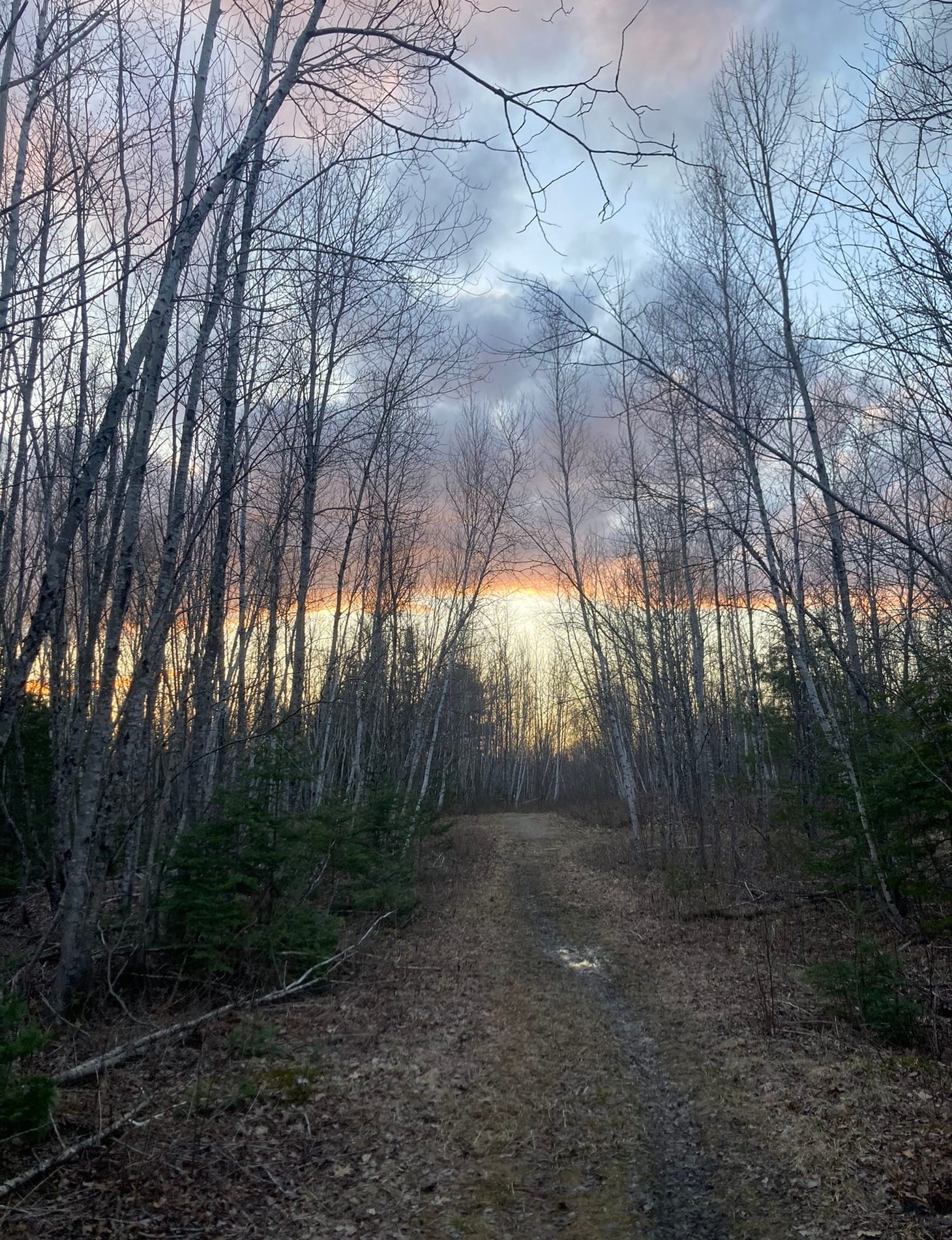
Table of Contents
Hello Wordloafers! Amy here, sending you a postcard.
I began this trip to be a part of Ellie Markovitch’s Farms, Food, and Photography course at UMaine in Orono. This class began when she lived near me in upstate New York, and taught versions of it with our local land trust and the arts center, leading kids and adults to see—with cameras and with their whole selves—farmers, farming, cooking, and maybe all the relationships between us and the land as we eat.
Ellie’s a photojournalist from Brazil, and this semester she invited me to help her students explore their connections to food in writing. We met once remotely, and now I’m here for a weekend of farm visits, a couple of days of cooking, and a reception tonight, where they are showing their photographs and serving food—they’ll be standing outside the building on this beautiful spring day making flatbreads to invite people inside!
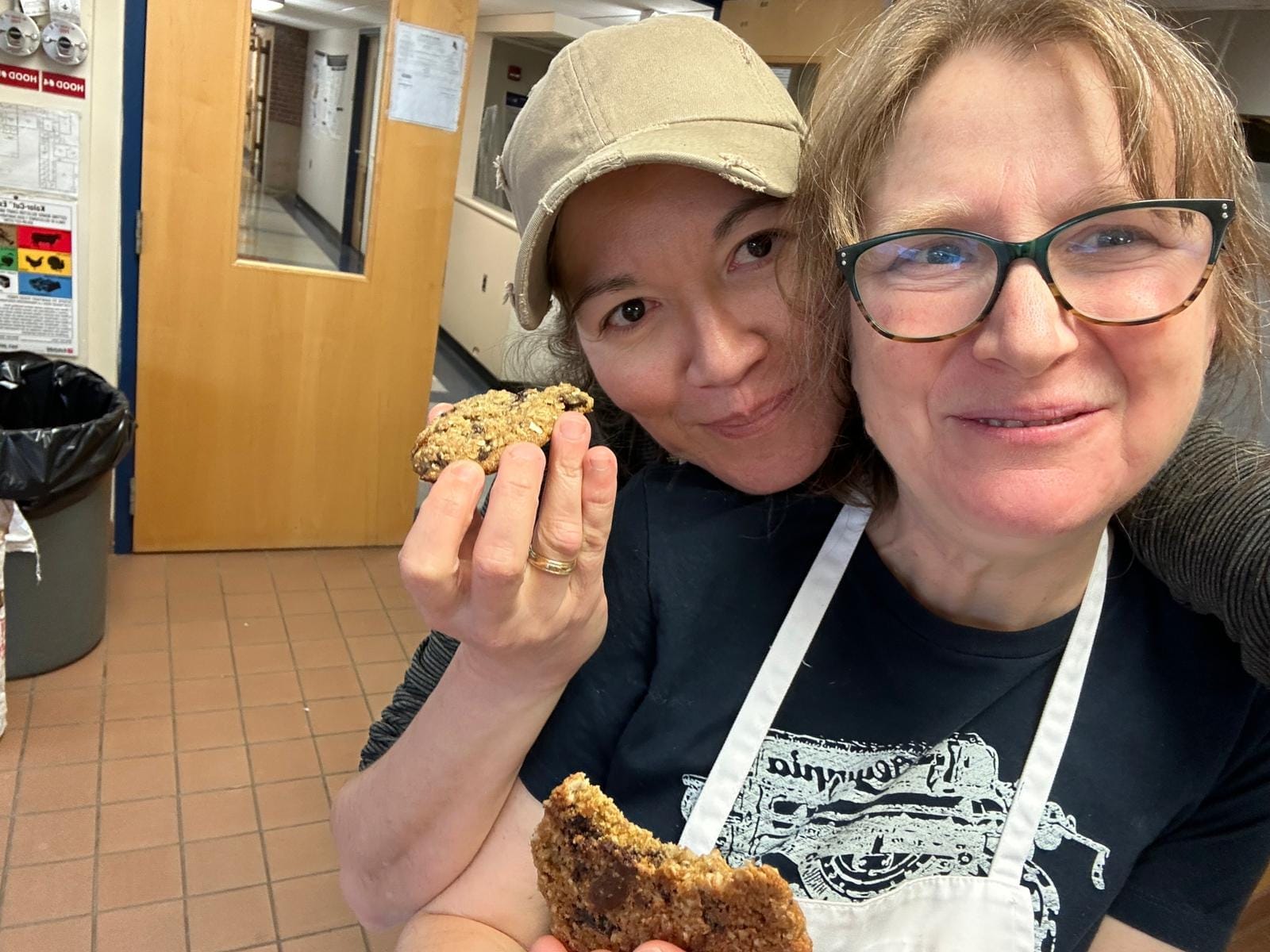
On my way here, I stopped by Blue Hill at Stone Barns, and spoke to a group of interns who’ve been exploring the food system. I love to visit the milling bakery at Blue Hill, which focuses on regional grains and using whole grain flours. They have a New American stone mill, and use grains from Seneca Grain and Bean, and Next Step Produce. Bakers Eli and Tyler were shaping loaves and milling, grand, standard stuff for service, and extra adorable breads for events, like brioche for lobster rolls and sunflower seed loaves I truly wanted to steal!
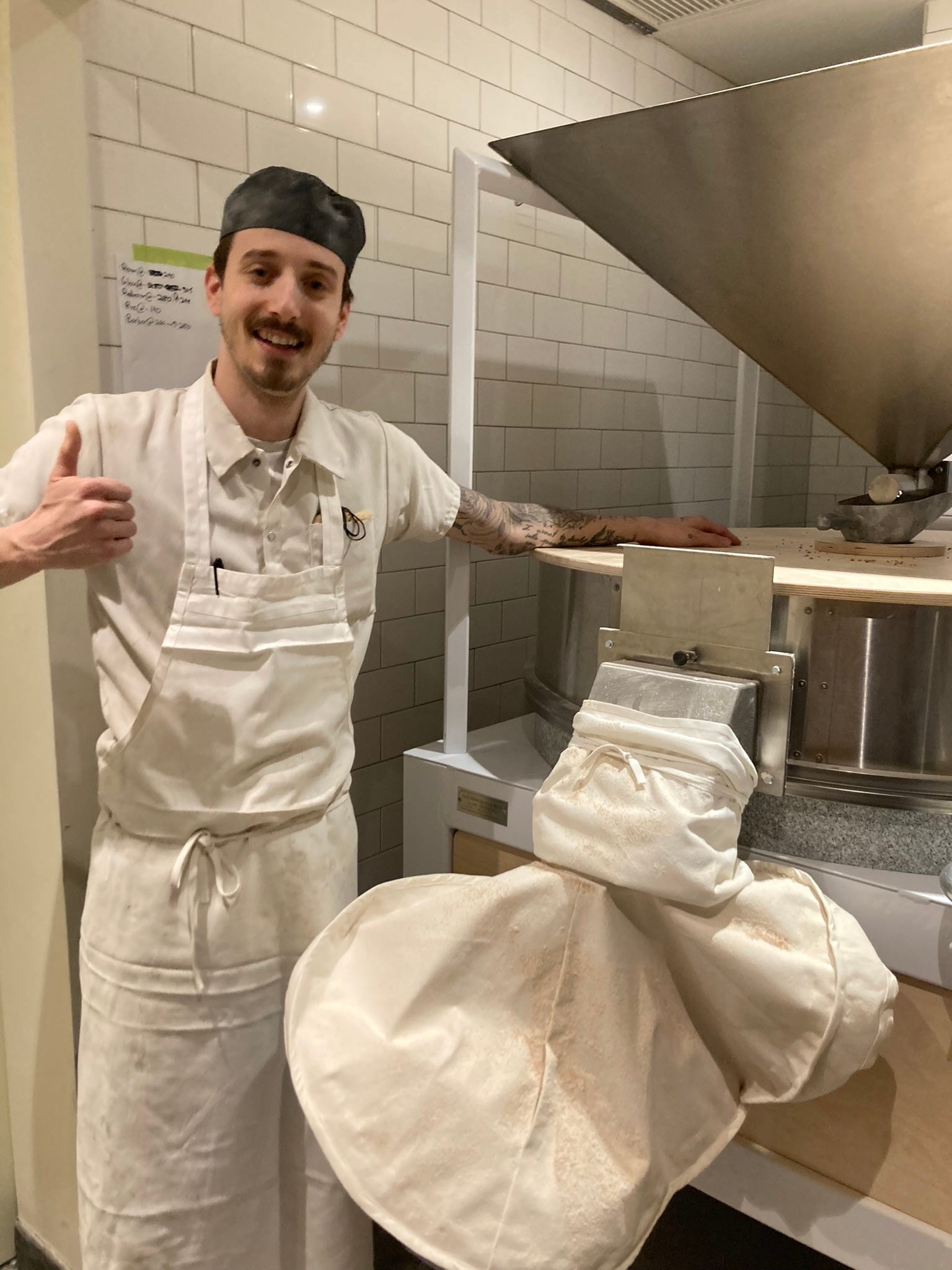
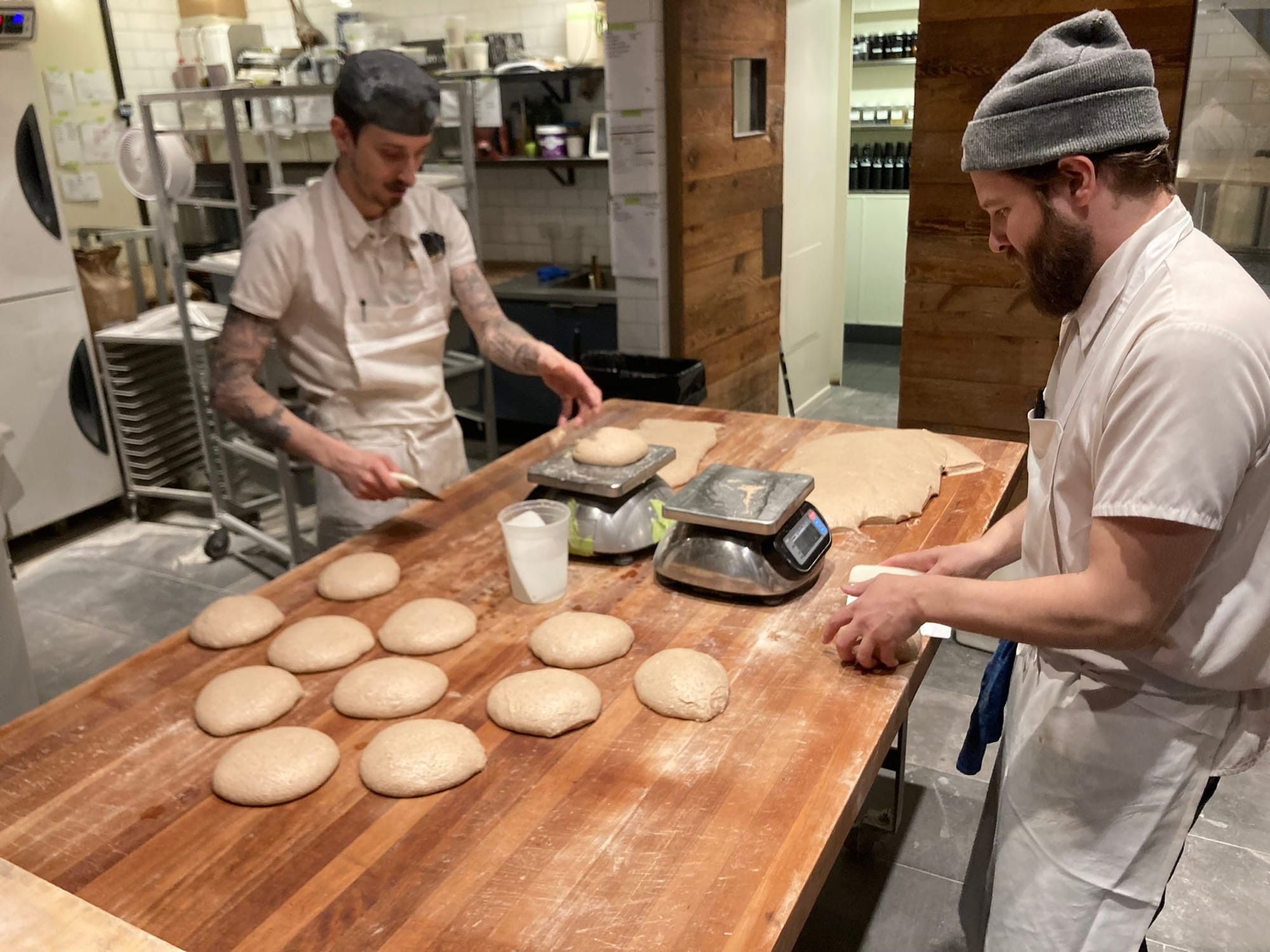
Stone Barns Center for Food and Agriculture is the farm surrounding the restaurant. It was too rainy for a tour but I got to talk with Tess and learn about the upland rice and sorghum they’re trialing, and the winter planted rye and wheats they’re growing.
Once I got to Maine, Ellie brought me and her class to Yellow Birch Farm, a goat dairy and vegetable farm on Deer Isle named for the 210+ year old tree—and its many, many relatives—behind the farm. Missy Greene and Eric Zine are artists whose homestead became a serious side-gig, and it was pretty magical to be with them, and to watch the students take in the farm with their cameras and selves.
Sunday we went to Rusted Rooster Farm, a diversified farm that grows and mills organic grains and is run by Sean and Sandra O’Donnell. I’d been here ages ago, and was impressed to see the grain-cleaning system at work in its barn, a new structure, watch the Meadows Mill in action, and learn more about their operation, which includes dairy cows and pigs. Sean is a real tinkerer, and he assembled his cleaning system from remnants of a Wheetabix factory in Massachusetts.
One of the invisible things about growing grains outside of the dominant system is that the equipment suited to small-scale harvesting and processing is either old or invented. People use combines from the 1960s, and screen cleaners from 1900; the design of these cleaners hasn’t changed, but contemporary models are made of steel rather than wood. But this isn’t the only thing required to get food-grade grains. There are spiral cleaners to remove certain unwanted seeds, and gravity tables and destoners to remove other undesired matter.
And somewhere between harvest and you, grains grown in an area with humid summers are going to need drying. Grains mature at 30% moisture, but store at 12-13%, and in the Northeast, rains threaten grain quality so farmers harvest at rates as high as 22%. Sean got a SARE grant to make a grain dryer from culvert pipe, fans, and a heater.
The cleaning system operates on pneumatics, using fans, vacuums, and flexible pipes from that old cereal factory. This means that the many different lots of crops can be moved by air, rather than with augers — which kick up a lot of dust and other matter — or brute force.
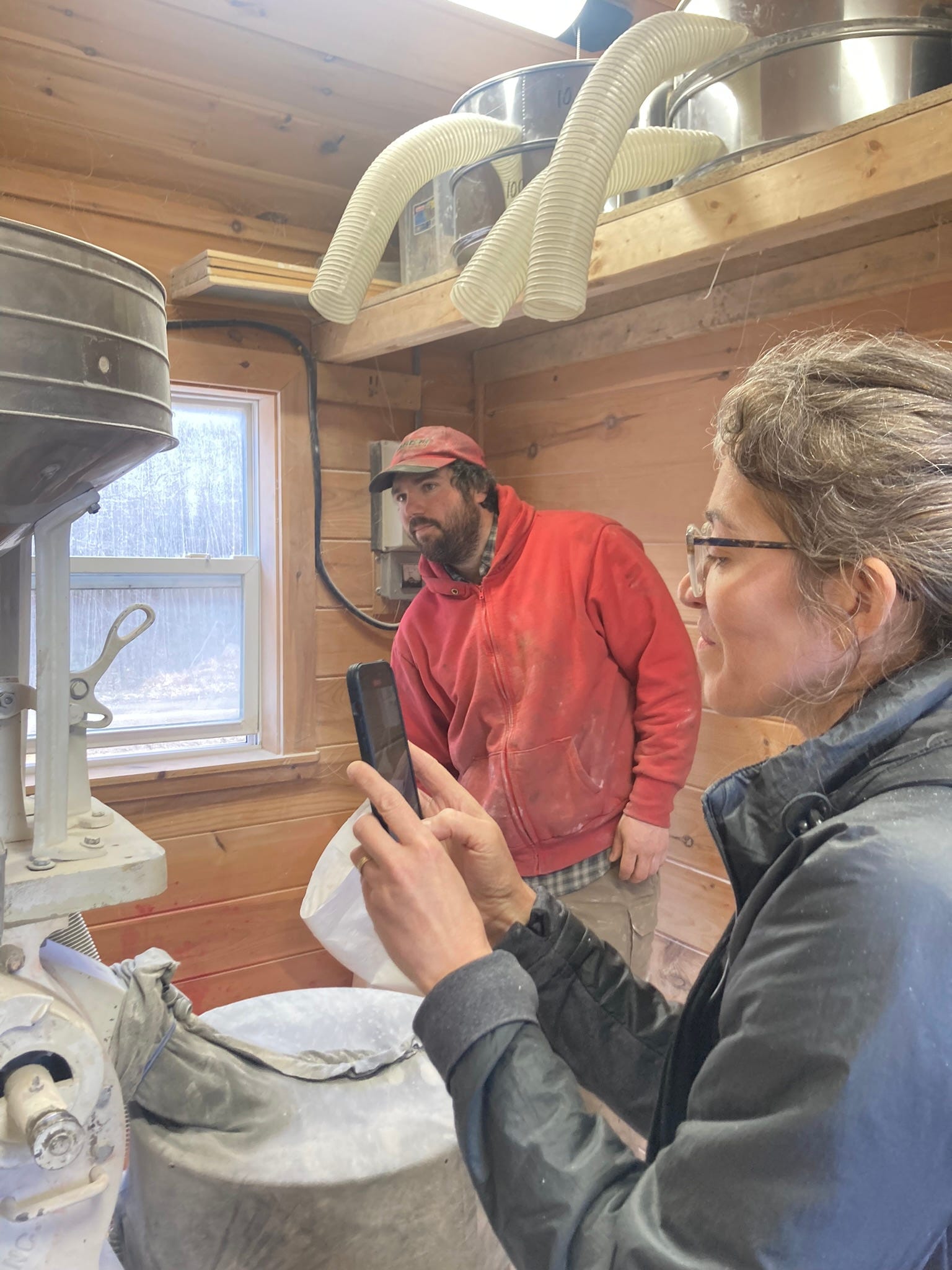
I’m going home with 40 pounds of Rusted Rooster flours and am excited to try them out. Sean grows a mix of heirloom and modern grains; heirlooms or heritage grains are varieties that were around before the Green Revolution, and preferred for their flavor. Unfortunately, yields can be as much as half as modern varieties, and this makes growing them a challenge. This isn’t a greed situation, just the reality of a crop that is generally sold in high quantities for low prices. We want our bread and other staples to be cheap, and it is tough to make their cost reflect the labor invested in them—or their centrality to our diets.
Sean and Sandra have a farmstand, and are selling their grains, flour and mixes in a CSA fashion. They’re working on being able to ship, so keep your eye on their social accounts to see when—and to hear more about what’s happening at this farm.
I’m headed home now, and excited for my next adventure, which will be in the Catskills. Jennifer Kabat has written a beautiful book, The Eighth Moon: A Memoir of Belonging and Rebellion and she’s going to walk me through the places that made her dig into the history of where she lives. My next big trip is to Miami at the end of May — for a talk with Harold Wilken from Janie’s Mill, Richard Bourdon from Berkshire Mountain Bakery and Jordi Morera, extraordinary fifth generation baker who is coming from Spain to teach a masterclass — please take a look and join us!
Your flour pal, Amy

Photos are mine, except for the one of me and Ellie — thanks to her student Keagan Rice for that!
wordloaf Newsletter
Join the newsletter to receive the latest updates in your inbox.



